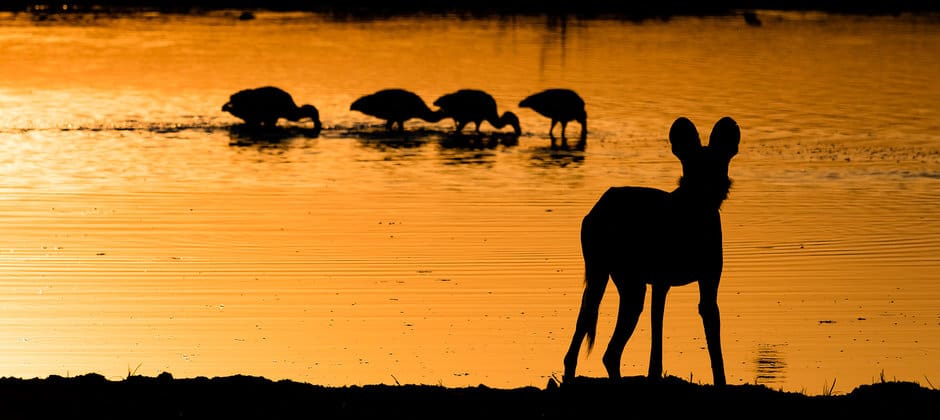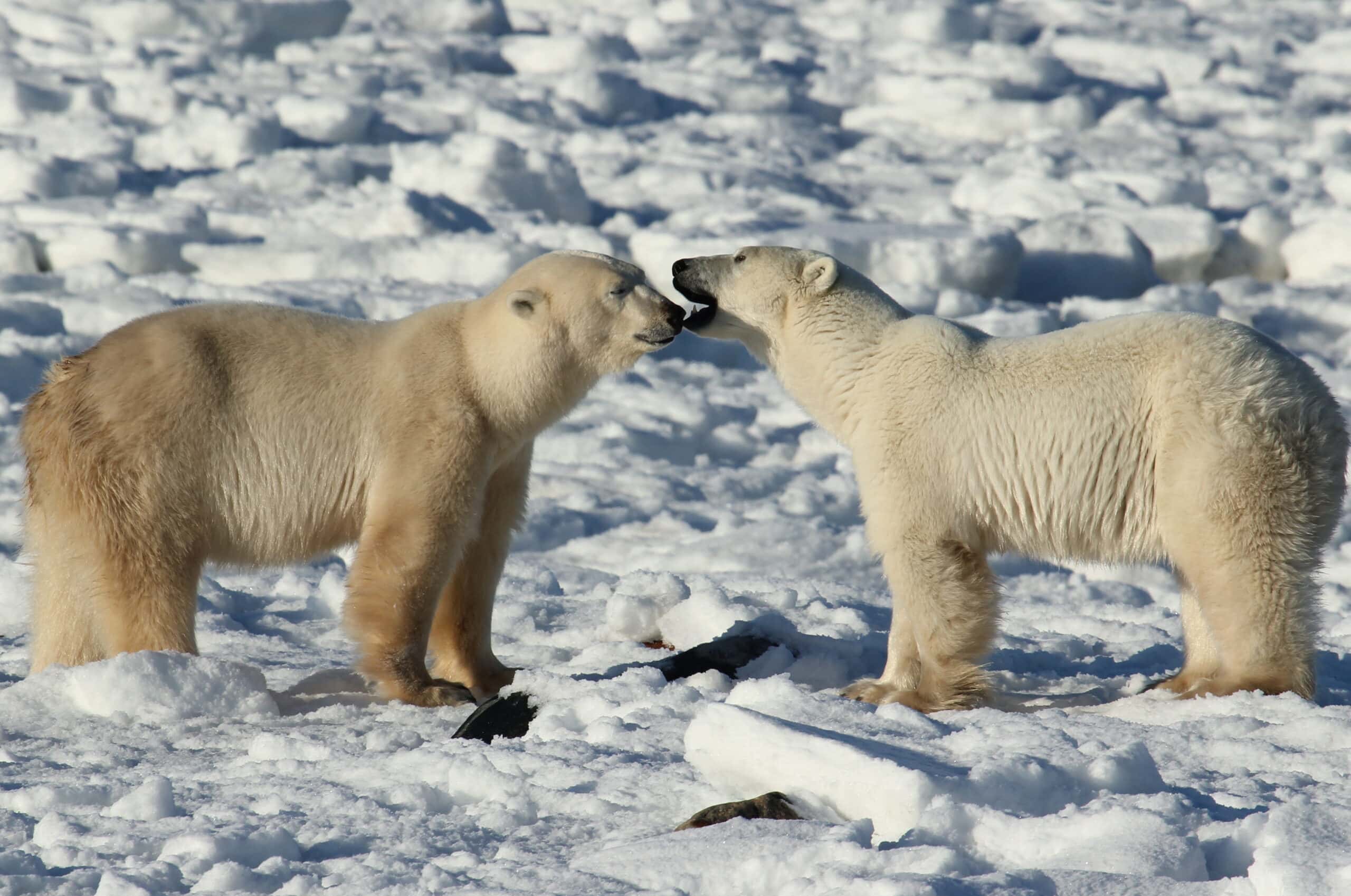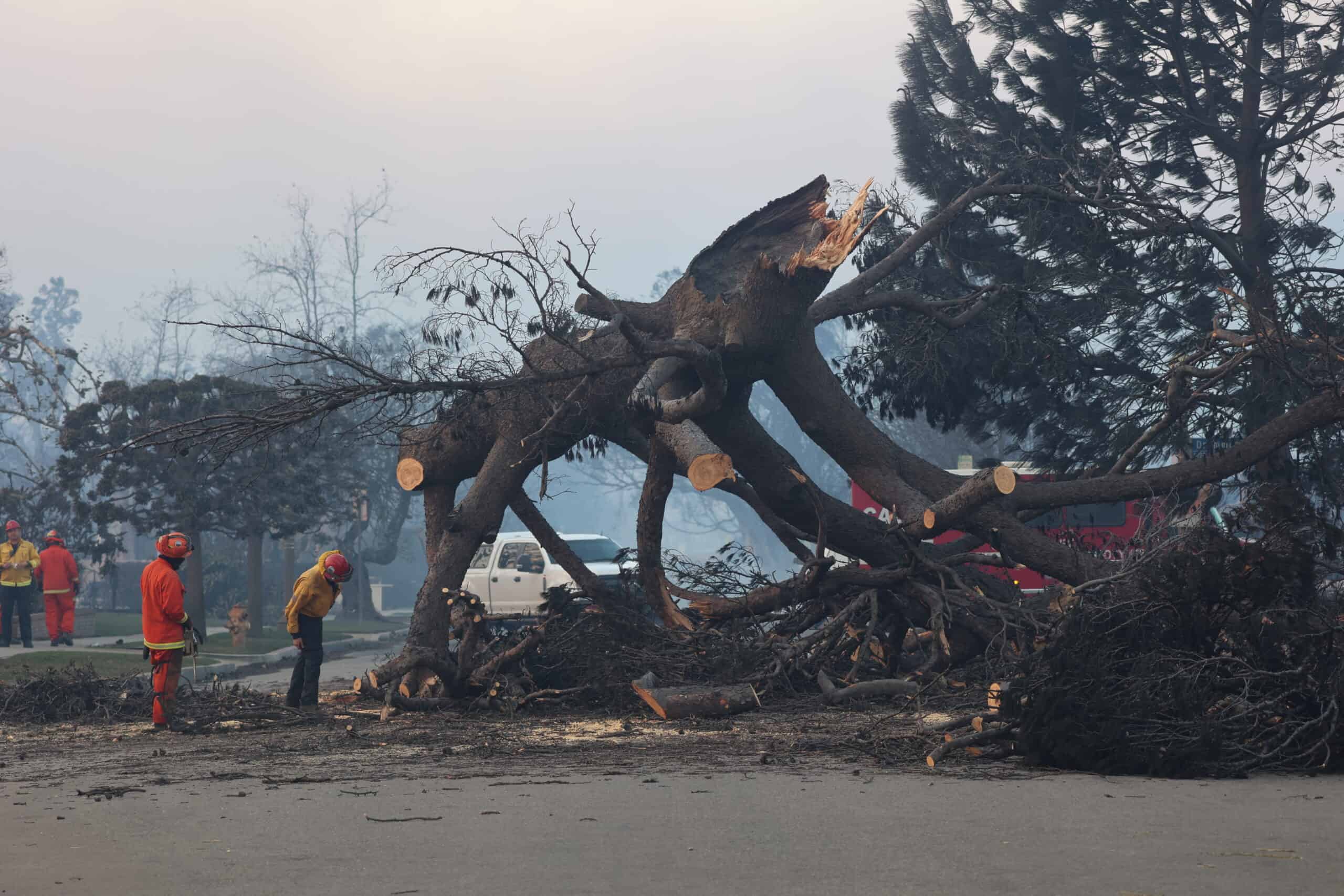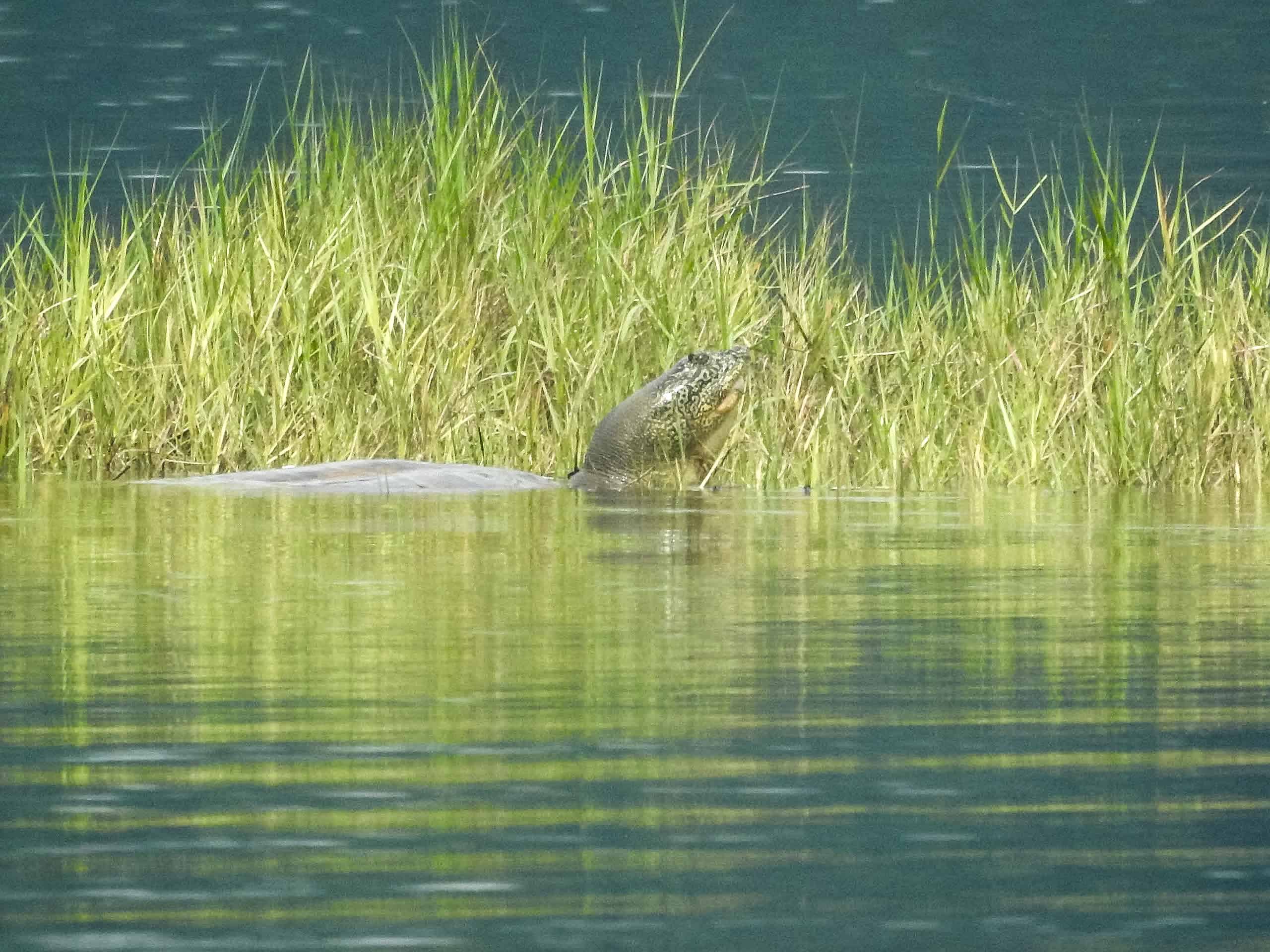Share this article
Wild Cam: Human activity blocks African wild dog dispersal
Human structures and roadways present some of the largest barriers to the connectivity of endangered African wild dog populations in southern Africa.
Researchers set out on a vast multi-country study to track what happened to African wild dogs (Lycaon pictus) that dispersed from their pack. They wanted to better understand the populations across the multi-country region of the Kavango–Zambezi Transfrontier Conservation Area, a roughly 200,000-square-mile area that sits between Botswana, Namibia, Angola, Zambia and Zimbabwe.
“This is by far the largest conservation area on the earth,” aid Gabriele Cozzi, a research associate at Zurich University and the lead author of a study published recently in the Journal of Wildlife Management.
Enlarge
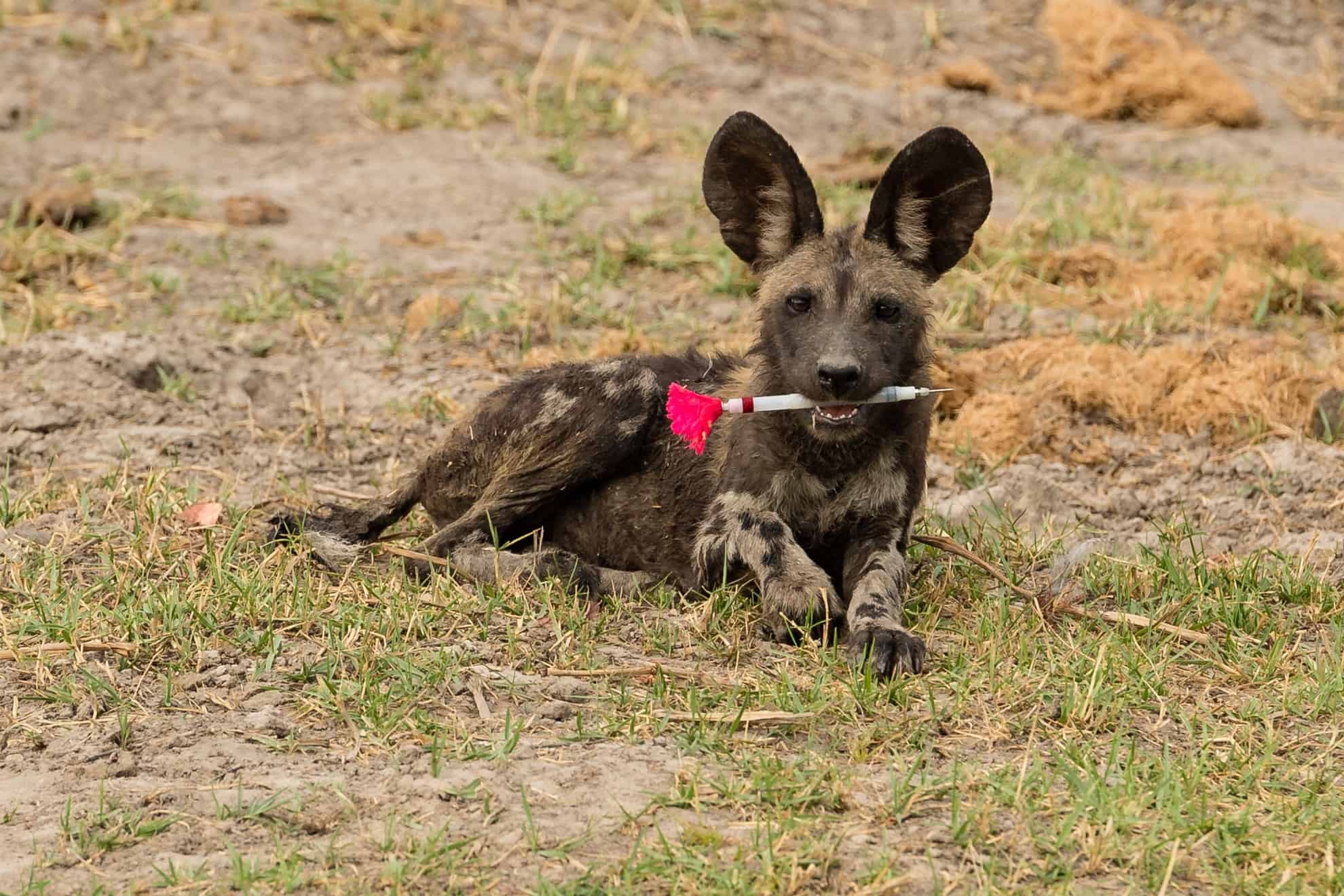
popecol.org
African wild dogs often disperse from their birth pack, sometimes alone but more often in single-sex groups of dogs. From 2016 to 2019 Cozzi and his co-authors caught at least one individual from 16 of these dispersing groups using tranquilizing darts. In this case, the researchers joked, the tables turned when a six-month old pup got ahold of a dart that had just fallen off the targeted adult in its pack. “It took him about two to three minutes before he eventually lost interest too and left it on the ground,” Cozzi said.
Enlarge
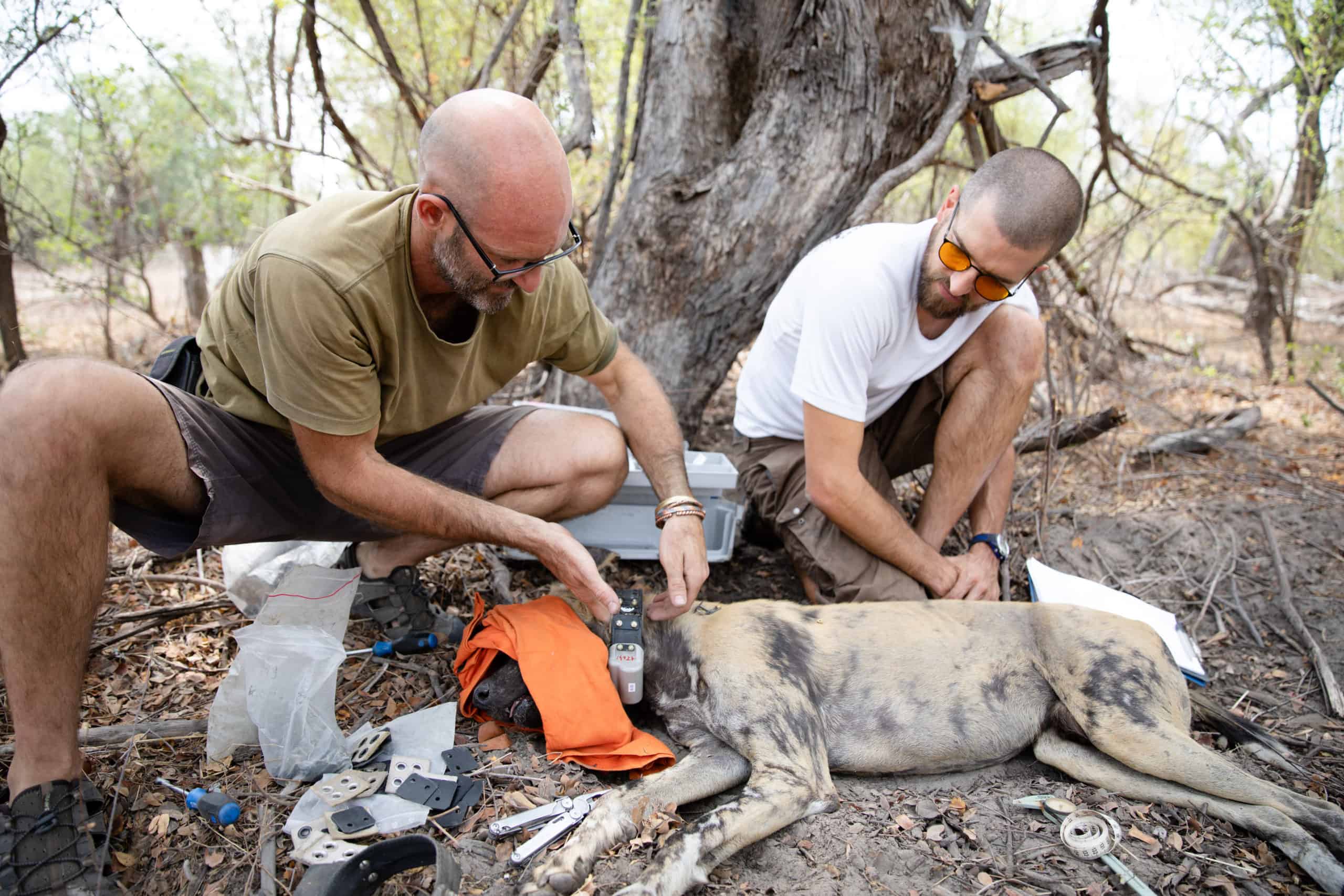
popecol.org
The researchers fitted GPS tracking collars on the dogs they anesthetized after taking measurements in Botswana. They then followed these animals after they dispersed from their previous group, using the GPS data their collars automatically recorded and periodically sent to a base-station via satellite.
Cozzi said about 5,500 to 6,000 African wild dogs live across sub-Saharan Africa from Chad to South Africa. But most of the various populations aren’t connected even remotely with one another. The Kavango–Zambezi is by far the largest contiguous landscape occupied by the dogs.
As apex predators, the dogs fulfill important roles in their ecosystems. They hunt in large packs that can include dozens of adults and many more pups, mostly targeting medium-sized antelopes and using different strategies depending on the size of the animal.
“Their hunting success is incredibly high,” Cozzi said. “It’s by far the most successful of any large predators.”
African wild dog are considered endangered by the International Union for Conservation of Nature, mostly due to habitat loss from development and other human encroachment, though poaching, climate change and a litany of other problems affects them as well.
Enlarge
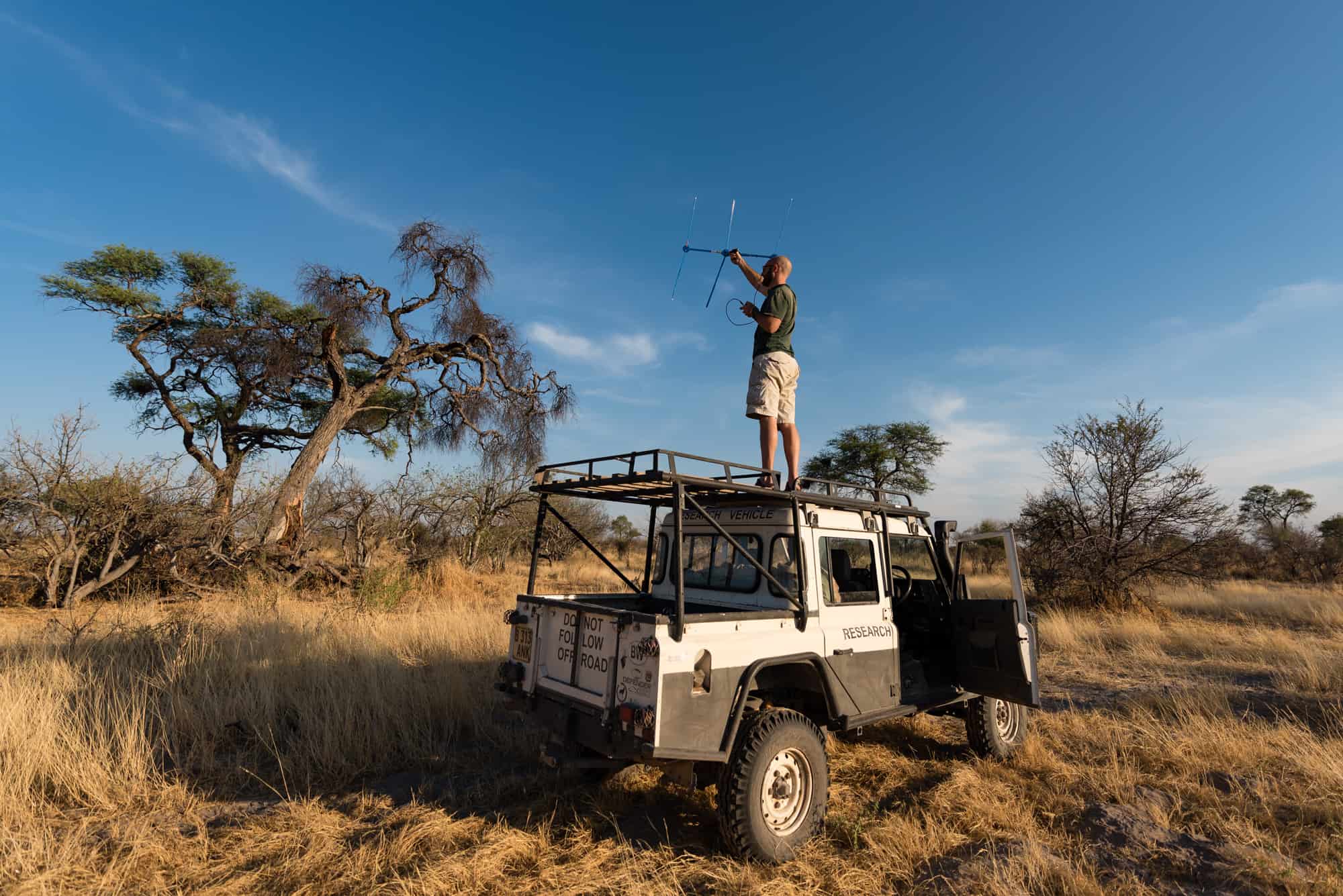
popecol.org
Unlike most canids, where females tend to stay close to home, both female and male wild dogs disperse.
Cozzi and his colleagues tracked an equal number of males and females dispersing, sometimes alone and sometimes in female-only or male-only groups. They followed these dispersing groups by jeep, sometimes experiencing roadblocks from passing elephants or popped tires they had to change “in record time, similar to F1 mechanics” so as not to lose dogs traveling about 9.3 miles per hour at leisure speed.
The dogs they tracked traveled a maximum of 33 miles per day, and some made remarkable journeys. One dog traveled 93 miles to the Namibian border over the course of five days. Another traveled 214 miles to Zimbabwe over nine days.
Enlarge
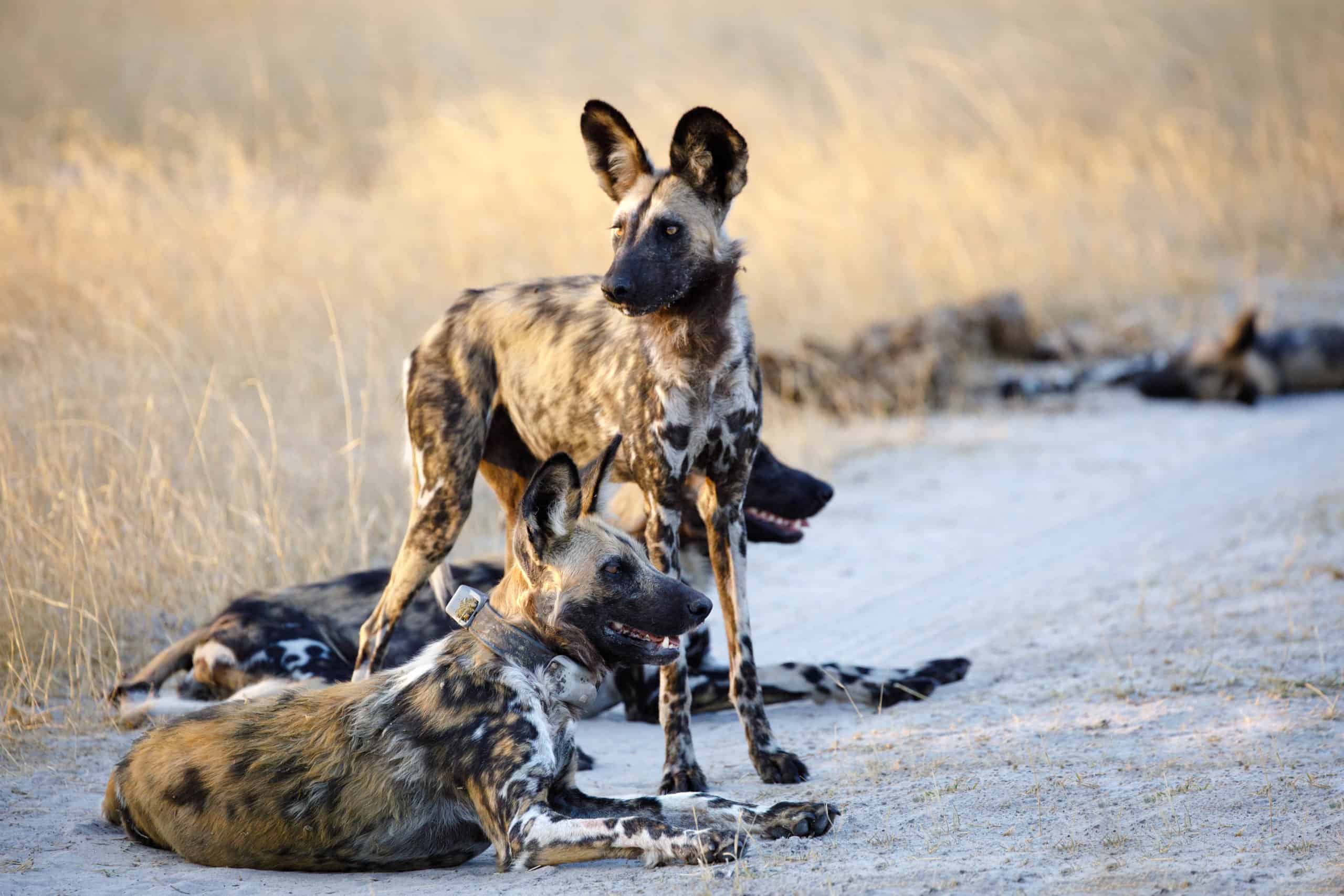
popecol.org
By following the dogs’ movements, the researchers determined the greatest barriers the dogs faced were mostly human structures and areas identified with human activity. Cozzi said the researchers recorded no dogs crossing a major road in the area (the dirt road full of lounging dogs was not a major road).
“Technology allows us to actually follow the fate of these dispersals,” Cozzi said.
But Cozzi said that it isn’t traffic that keeps the dogs away from the roads. There aren’t many cars.
“It’s a whole bunch of activities and human presence around that road,” he said. Tracking data often shows dogs traveling toward roads or villages, then doubling back. When they don’t come across these human-associated obstacles, they typically disperse in a fairly straight line.
Enlarge
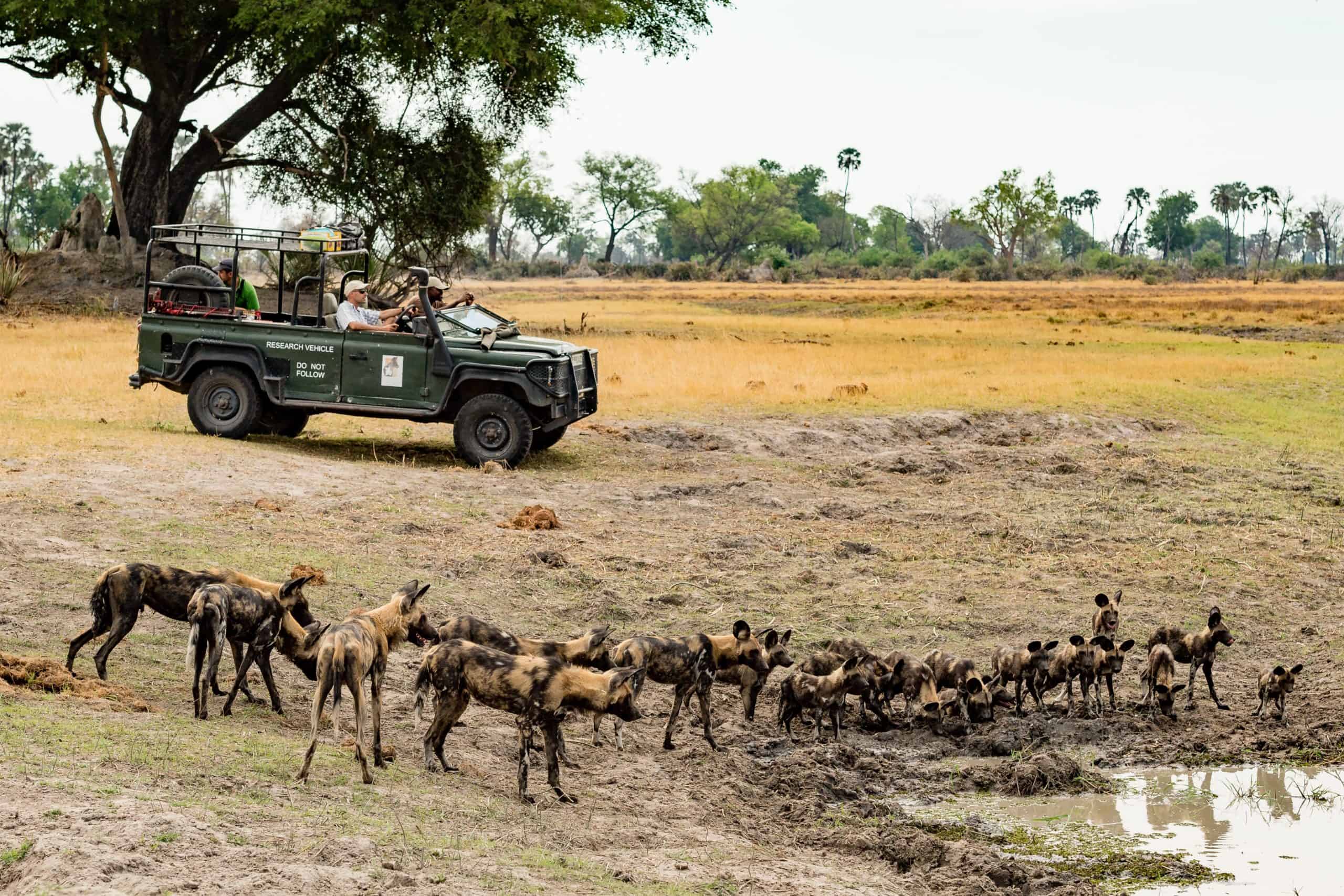
popecol.org
The dogs encounter natural barriers as well, mostly water in the Kavango–Zambezi. African wild dogs often stay near water, but they won’t cross large waterways, probably due to the presence of crocodiles. Cozzi said the researchers are still working to understand more about the role of water in dog dispersal.
Aside from the barriers they create, humans were the direct cause of more than 90% of the deaths recorded in the study. Of the 12 ascertained death cases, two dogs were shot, nine died of poisoning, and only one died of natural causes while dispersing. The majority of the deaths from humans resulted immediately after dispersers had formed a new pack and had taken residency on pastoral land just outside the boundary of the protected area.
Some of these deaths could be avoided in the future with better community education, Cozzi said. And wild dog-related tourism is bringing money to some of these regions, which can also help their plight.
“Wild dogs have recently gained interest from the tourism industry. That generates money and helps the livelihood of the economy,” he said. “It’s so much easier to keep them there if we can actually get a financial profit from them.”
Enlarge
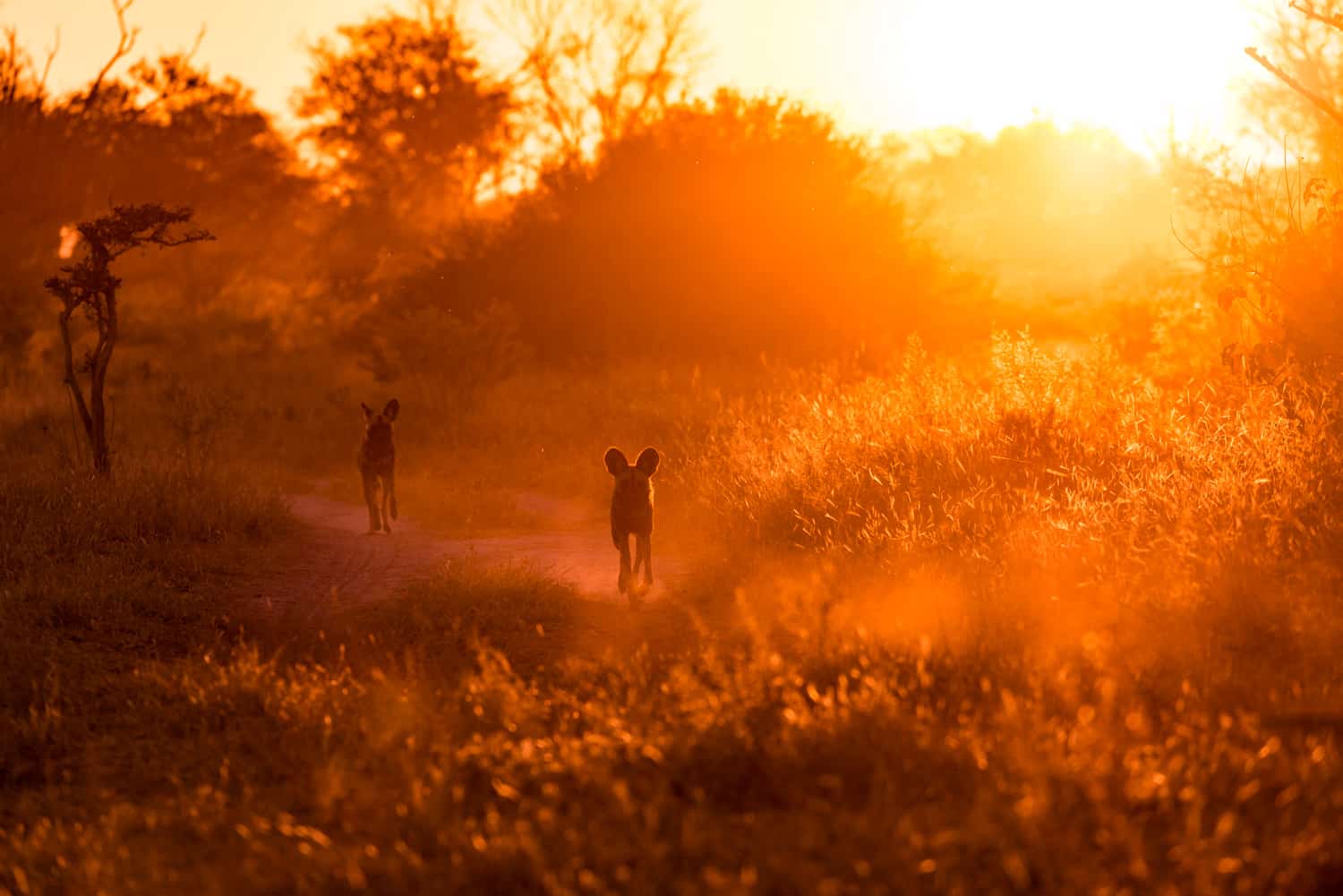
popecol.org
One of the researchers’ goals is to better understand where conservationists can focus attention to improve or maintain habitat connectivity in the future and improve survival rate of individuals that disperse as these two dogs in the photo are doing. Based on the data they gathered from this research, they can tell where wild dogs are likely to disperse and form a new pack, for example. If disease wipes out a population in an area that is relatively isolated, conservationists can better determine if it’s likely to be recolonized naturally or if translocation should be considered.
“It’s sort of a wakeup call that we need to think differently,” Cozzi said.
This photo essay is part of an occasional series from The Wildlife Society featuring photos and video images of wildlife taken with camera traps and other equipment. Check out other entries in the series here. If you’re working on an interesting camera trap research project or one that has a series of good photos you’d like to share, email Joshua at jlearn@wildlife.org.
This article features research that was published in a TWS peer-reviewed journal. Individual online access to all TWS journal articles is a benefit of membership. Join TWS now to read the latest in wildlife research.
Header Image: African wild dogs in sub-Saharan Africa are endangered. ©popecol.org



